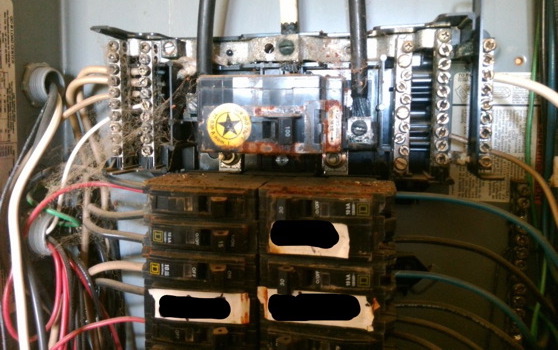
Articles
Features
Articles
Code File
Codes & Standards
Updated requirements for buildings housing livestock • Code File February 2021
February 26, 2021 | By Nansy Hanna, P.Eng.

February 26, 2021 – Barn fires can be tragic events for farmers, and the loss of livestock, buildings and equipment can be devastating in many ways.
In Ontario alone, approx. 80 reported fires involve barns housing livestock each year, with an estimated loss of $18.5 million. Approximately 40% of all barn fires are caused by electricity as the ignition source.*
Thankfully, updated requirements in the 2021 CE Code for buildings housing livestock will increase safety and help reduce the risks of barn fires and associated losses.
How did the changes come about?
As environments go, livestock barns can be quite corrosive. Not surprisingly, this corrosive environment is the leading cause of degradation or failure of electrical equipment.

The corrosive environment in buildings housing livestock is the leading cause of degradation or failure of electrical equipment.
The technical subcommittee responsible for those parts of the CE Code that address barns housing livestock was guided by a study that closely examined the environment in those buildings. Of primary interest was obtaining a better understanding of whether existing ventilation systems are able to control moisture and corrosive gases—the main culprits behind electrical equipment degradation and, ultimately, barn fires.
The key findings of this study revealed that existing livestock ventilation systems do not adequately respond to elevated moisture or corrosive gas conditions. In fact, environmental monitoring showed that barns housing livestock regularly experience extended periods of elevated moisture and corrosive gas concentrations.
As a result, the updated rules in CE Code 2021 focus on ensuring electrical systems are designed and installed to withstand these harsh environments. Some of the main requirements include:
The new series of Rules 22-800 to 22-808 require “Buildings housing livestock” to be classified as Category 1 (damp/wet) and Category 2 (corrosive) environments, unless a deviation is allowed by the Authority Having Jurisdiction. With this classification, electrical devices will be required to be approved for such environments (with the exception of specialty equipment). Specialty-type equipment is defined as “Agricultural equipment designed and used for a specific and unique purpose”.
Distribution equipment and panelboards will be required to be located in rooms that are completely cut off from the corrosive environment.
Wiring method restrictions contained in the 2018 CE Code are maintained in 2021. This includes not permitting EMT conduits and aluminum conductors, and requiring cables without metallic armour to be provided with protection from rodents.
These changes are an excellent example of co-operation between several parties—industry and regulators; a working group from Ontario’s Ministry of Agriculture, Food and Rural Affairs; insurance companies; and the Ontario Federation of Agriculture—all working toward the common goal of reducing harm and loss in this sector.
* Based on data from Ontario’s Office of the Fire Marshal & Emergency Management (OFMEM), which tracks fire incidents across the province, including barns housing livestock.
NOTE: Always check with your AHJ for more specific interpretations.
Nansy Hanna, P.Eng., is senior director, Engineering & Regulations, at Ontario’s Electrical Safety Authority (ESA). She is also chair of the Canadian Advisory Council on Electrical Safety (CACES) and a member of the ULC Advisory Council, CSA Technical Committee on Industrial, Consumer and Commercial Products and CSA CE Code-Part I, Sections 24, 32, and 46. She can be reached at nansy.hanna@electricalsafety.on.ca.
This column—along with other great content—appears in the February 2021 edition of Electrical Business Magazine. Even more back issues are located in our Digital Archive.
Print this page